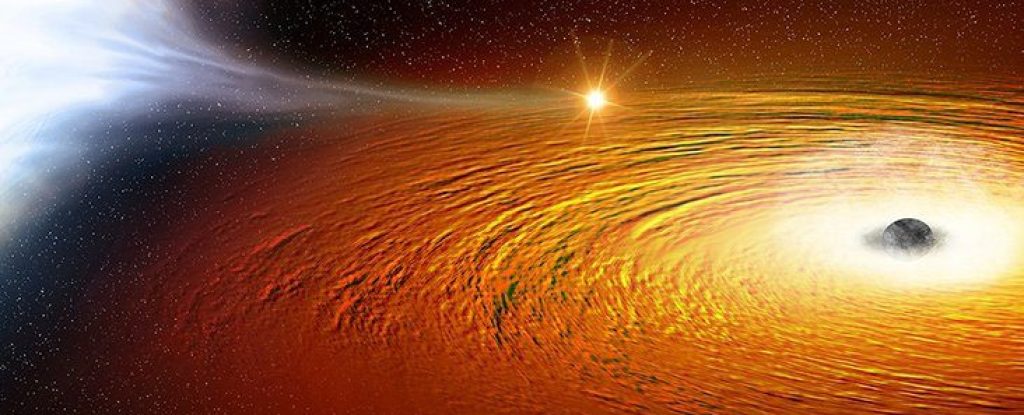
Astronomers observed a star orbiting a black hole closer than ever been seen before and its moving at break-neck speeds—about one percent the speed of light, according to ScienceAlert.
The distance from the star to the black hole is about two and half times the span between the Moon and Earth. Because of the close proximity, one orbit around the black hole takes less than a half hour. For a point of comparison, the Moon takes 28 days to orbit our planet.
Astronomers suspect the star is a white dwarf—a dense planet-sized remnant of a star after it dies. According to NPR, it’s the first time an astronomical phenomenon like this has been witnessed.
“This may be the tightest orbital dance ever witnessed for a likely black hole and a companion star,” NASA said. The rapid descent is happening in our galaxy, about 14,800 light-years away, NPR reports.
The celestial duo, called 47 Tuc X9, isn’t new to astronomers, but their observed behavior is new and has just been published in Monthly Notices of the Royal Astronomical Society.
The pair were discovered in 1989, but scientists only determined one was a black hole in 2015.
—RealClearLife
This article was featured in the InsideHook newsletter. Sign up now.






















